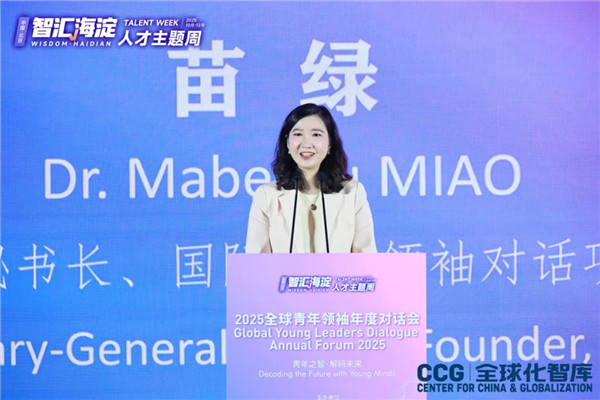Wang Huiyao’s Address on CCG Ambassadors Roundtable
March 15 , 2022
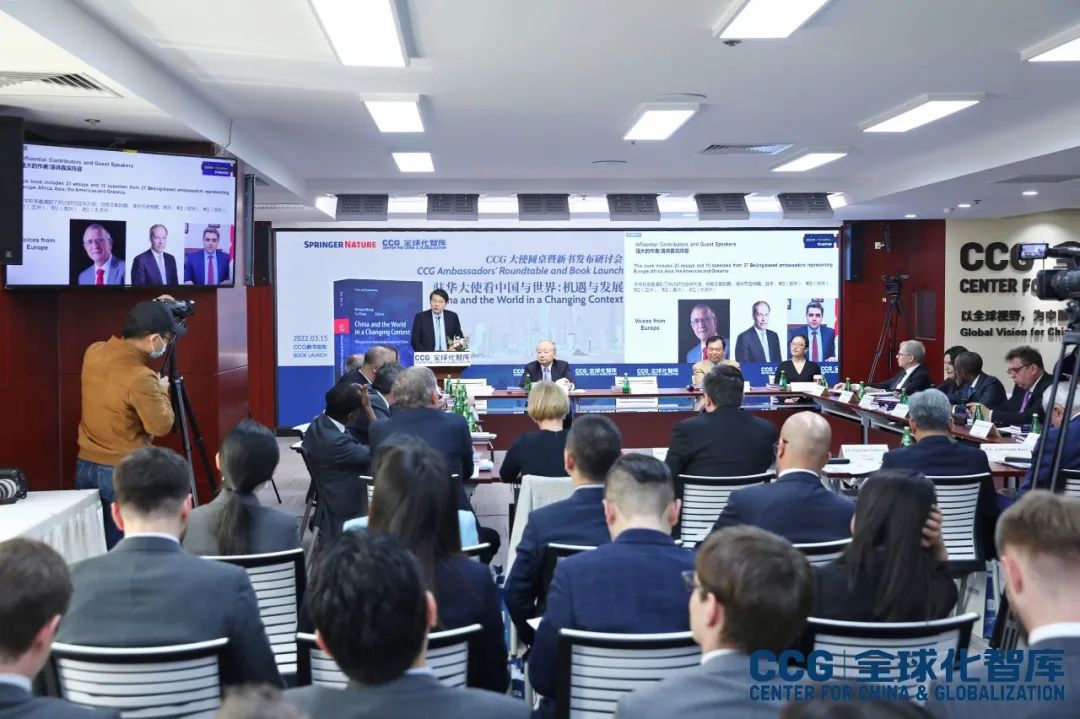
On March 15th, the Center for China and Globalization (CCG) hosted an ambassadors’ roundtable featuring the release of China and the World in a Changing Context: Perspectives from Ambassadors to China, its latest edited volume published at Springer-Nature.
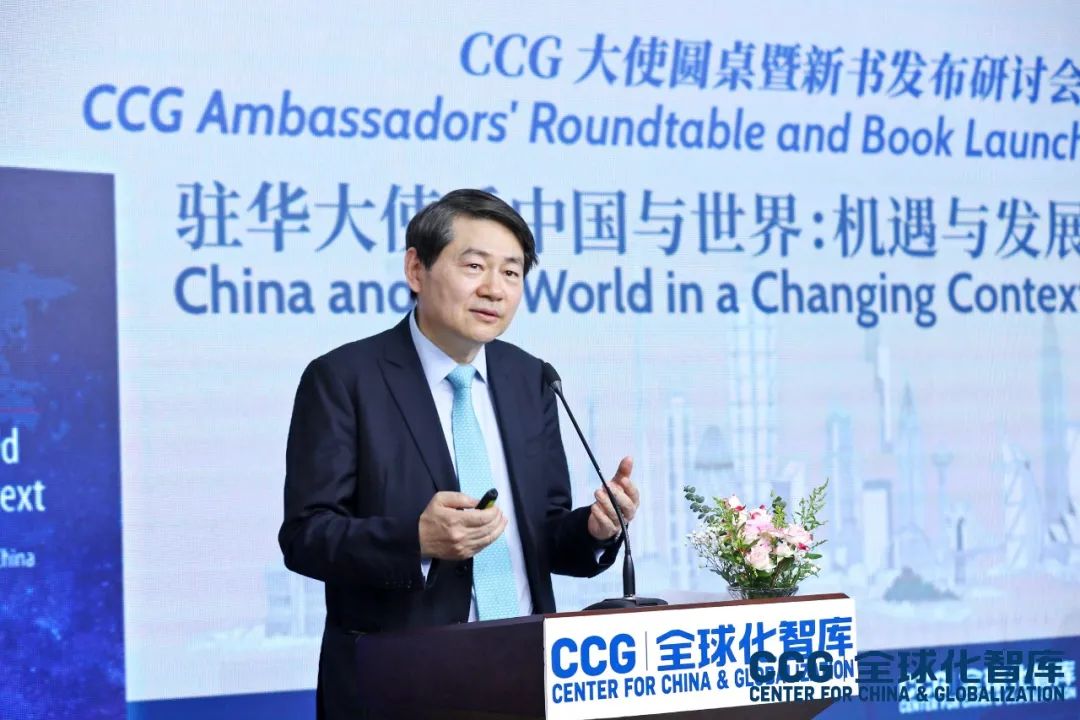
Dr. WANG Huiyao, CCG President, Springer Series “China and Globalization” Editor, gave an address on CCG’s new book China and the World in a Changing Context: Perspectives from Ambassadors to China. Full text is as below.
Ambassadors, Distinguished guests, media friends,
Good afternoon.
I am Wang Huiyao, founder and president of Center for China and Globalization.
We are thrilled to celebrate with you all today the release of CCG latest publication—China and the World in a Changing Context: Perspectives from Ambassadors to China.
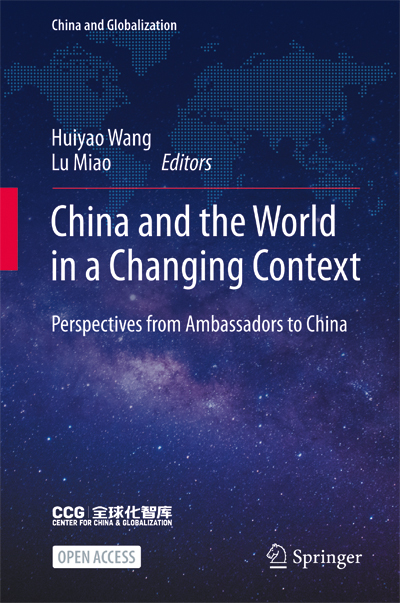
Editors: Huiyao Wang, Lu Miao
Published in March, 2022
ISBN: 978-981-16-8085-4
Publisher: Springer Nature Publishing Group
Download Book at Springer
https://link.springer.com/book/10.1007/978-981-16-8086-1
China and the World in a Changing Context: Perspectives from Ambassadors to China is the fourth book in the “China and Globalization” series that has been published with Springer Nature, one of the top publishers in the world. This book series seeks to create a balanced global perspective by gathering the views of highly influential policy scholars, practitioners, and opinion leaders from around the world. The editors of this book series include myself and Dr. Mabel Miao Lu, the co-founder of CCG. Our motivation for creating this book series draws on the spirit and core culture of CCG, which is based in the belief that a globalized world is a core component for the creation of a peaceful and sustainable world order that contributes to the mutual benefit of all mankind.
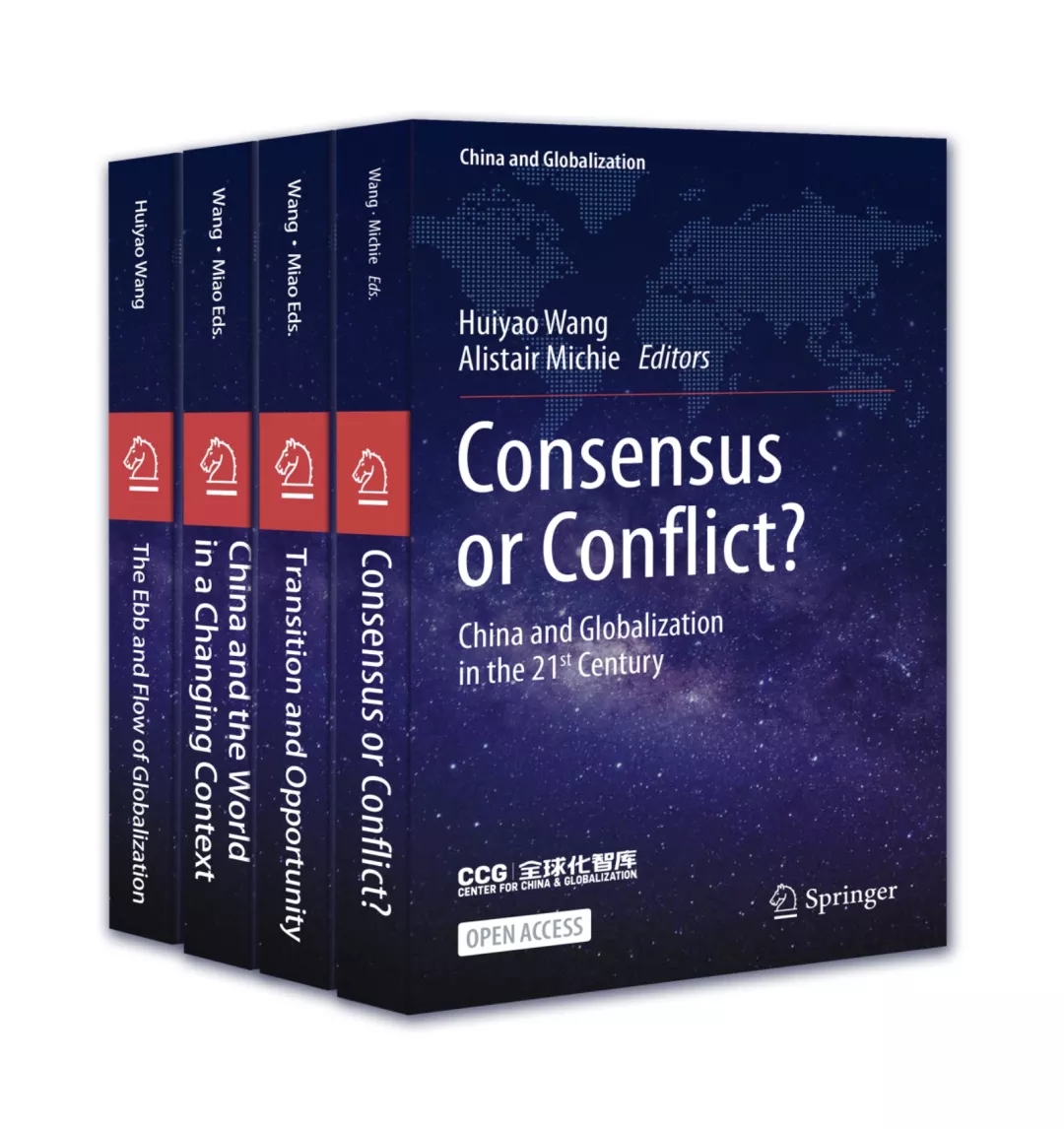
Series Editors: Huiyao Wang Lu Miao
Publisher: Springer Nature Publishing Group
Ambassadors are a kind of bridge and bellwether for globalization. Your diplomatic envoys serve as pivotal contact points between nations across a wide range of fields, from economics and culture to health and the environment. The special group of ambassadors in this book – those based in Beijing – are at the forefront of what for many countries is one of their most important bilateral relationships, as well one of the most striking and consequential aspects of global affairs in the 21st century: the rise of China on the world stage and its exchanges with the world.
In our globalized world of transnational supply chains, dense people-to-people linkages, and shared various threats, the roles that ambassadors and embassies play has become more important than ever because countries are so deeply connected and interdependent. And as China plays an increasing role in the global economy and global affairs, its relations with other countries have become a subject of growing interest—and at times contention. Plugged into the politics of their home capitals, but also tasked with keeping a finger on the pulse of China and the world at large, ambassadors have a unique perspective on some of the major issues of our times, such as COVID-19, trends in the global economy, ongoing shifts in geopolitics, and the opportunities and challenges facing global governance. Their insights are useful not only for policy-makers, but also for academics, entrepreneurs, media, and anyone trying to make sense of our rapidly changing world.
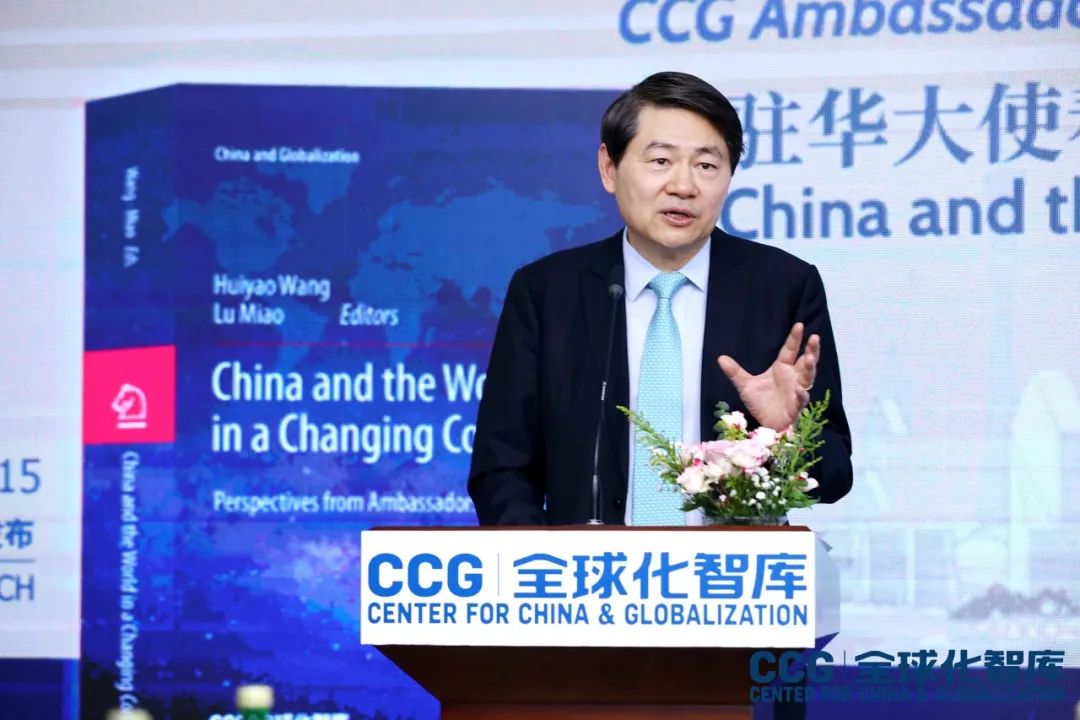
Since it was founded, the Center for China and Globalization (CCG) has recognized the unique role and expertise of ambassadors and worked hard to establish and forge close relations with ambassadors from both developing and industrialized countries from every corner of the globe. This includes regular engagement with foreign embassies in Beijing by hosting visits to the CCG offices in Beijing and accepting invitations to participate in external meetings for face-to-face discussions on topics including trade and economic relations, geopolitics, and global governance. Some foreign diplomats have also worked with CCG to pass on their constructive views and suggestions to Chinese government. In addition to these ongoing ad hoc meetings, CCG also hosts special events that bring foreigner ambassadors together and has created platforms at its flagship forums to facilitate dialogue and bridge gaps between China and the rest of the world.
Since launching these roundtables, we have found the perspectives that official envoys share to be both invaluable and illuminating—not only in conveying the views and experiences of their own country, but also for their insights into global affairs and China’s development. For some time, we have wanted to share these perspectives with a wider audience to contribute in some small way to opening up the conversation on China, globalization, and other pressing topics of the times. It is in this spirit that CCG has compiled this volume of original works by ambassadors to China from a wide range of countries, hoping to provide balanced and diverse perspectives on the world today.
China and the World in a Changing Context: Perspectives from Ambassadors to China brings together essays by ambassadors from Africa, the Americas, Asia, Europe and Oceania to China on a range of bilateral and multilateral issues, including trade and investment, regional economic cooperation, sustainable development, technology and innovation, and entrepreneurship. Specifically, our contributors have shared their thoughts and insights in three parts:
The first part, Mutually Beneficial Relations, features essays by ambassadors from Africa, the Americas, Asia, and Europe on the bilateral relations between their respective countries and China, emphasizing how cooperation brings mutual benefits in a variety of fields and sectors.
The first article is by Ambassador José Luis Bernal from Mexico, and highlights the importance of dialogue and people-to-people relationships in the process of developing a strategic partnership between China and Mexico. The second article by Ambassador Archil Kalandia from Georgia echoes this, covering high-level dialogues between the leaders of China and his own country, which has become an important participant in the Belt and Road Initiative. The third article in the first part is by Ambassador Akram Zenyalli of Azerbaijan, one of China’s key Central Asian neighbors, and discusses the role of the bilateral relationship in efforts to overcome the pandemic. The next piece by Ambassador Teshome Toga Chanaka of Ethiopia describes how equality, mutual trust, respect, and shared interests between Ethiopia and China have formed the foundation of their mutually beneficial relationship. Following this is an essay by Ambassador Rafael Dezcallar de Mazarredo, which focuses on trade relations between China and Spain as a catalyst for deeper, more beneficial cooperation. The unique relationship between China and Africa, especially in the field of poverty alleviation, is the main focus of the next article by Ambassador Rahamtalla M. Osman Elnor, representative of the African Union. Staying with Africa, the next article by Ambassador Sarah Serem discusses how Kenya’s 60-year relationship with China has been reinvigorated through the Belt and Road Initiative. The final article of this part is by Ambassador Ann Derwin of the Republic of Ireland and highlights cooperation in trade, R&D, and green finance as China’s industrial sectors mature and expand.
The second part, Facing Challenges Together, looks at the importance of international cooperation to address the most pressing issues of our age such as the COVID-19 pandemic, global economic recovery, and climate change.
The opening article of this part is by Ambassador Alenka Suhadolnik of Slovenia and focuses on the theme our “Blue Marble”—that iconic image of the earth as viewed from space, which serves as a powerful symbol of the common interests and shared fate of all of humanity. Continuing the theme of environmental issues, the next article by Ambassador Wim Geerts of the Netherlands, describes the green partnership his home country has forged with China. Education is a theme that underpins all of our shared challenges and is the subject of the article by Ambassador Jarno Syrjälä of Finland, describing how China and Finland have been working together to innovate approaches to learning. The following article by Ambassador Luis Diego Monsalve of Colombia discusses trade between his country and China in the context of global economic challenges during COVID-19. The next article in the second part is by Ambassador Ahcène Boukhelfa of Algeria. It discusses his country’s fight against poverty and how China has supported these efforts. Ambassador Clare Fearnley of New Zealand writes about how trade between China and her country has accelerated economic recovery in the wake of COVID-19. Next is Ambassador Hideo Tarumi of Japan on Japan’s role in the post-pandemic era and economic relations with China. The final article of the second part is by Ambassador José Augusto Duarte of Portugal, and focuses on the challenges of diplomacy amidst a changing international order and the need for dialogue to forge common values.
The third part, Creating a Common Future, features essays by seven ambassadors from very different corners of the globe, looking ahead to how international cooperation in fields such as infrastructure, technology, supply chains, and global governance can bring us closer together and forge a world that is more stable, prosperous, and resilient.
The first article in this part is by Ambassador Mohamed Elbadri of Egypt, which links the ancient cultures of China and Egypt to their joint role in building a common vision of the future. Ambassador Mbelwa Kairuki of Tanzania discusses the role of cooperation between his own country and China in forging a shared common future, in particular through the Belt and Road Initiative. Moving on, the next article by Ambassador Carlos Miguel Pereira Hernández of Cuba recalls the common revolutionary history of China and Cuba and the partnerships of the two countries in biotech, service industries, and environmental cooperation. Ambassador Djauhari Oratmangun of Indonesia also highlights early cooperation with China, going back to the maritime Silk Road and early visits by the Ming admiral Zheng He. Continuing the theme of a common future, Ambassador Wojciech Zajączkowski of Poland emphasizes how all countries are interdependent in our modern world, stressing that the world needs China, but that China also needs the world. Ambassador Arthayudh Srisamoot of Thailand writes of the need to create a bigger “pie” to ensure shared prosperity. The final article in this volume is by Ambassador Paulo Estivallet de Mesquita of Brazil, who argues that China is a part of almost everything in today’s world, which means that it must embrace the rights and responsibilities that come with its new stature to ensure that multilateralism and shared prosperity moving forward.
Here are just a few examples of the insights that are shared in this volume:
Our first book of the “China and Globalization” series, Consensus or Conflict? – China and Globalization in the 21st Century, was published last September and there have been over 162,000 downloads since its official launch on September 30, 2021.
Also an open access book, Consensus or Conflict? brings together 38 leading international scholars and policy-makers to explore the challenges and dilemmas of globalization and governance in an era increasingly defined by economic crises, widespread populism, retreating internationalism, and a looming cold war between the United States and China. It provides a diversity of views on topics that are most relevant today such as global governance, climate change, global health, migration, the S&T revolution, financial markets, and sustainable development.
Our second book of the “China and Globalization” series, The Asian 21st Century, consists of essays written by Kishore Mahbubani, who explores the challenges and dilemmas faced by the West and Asia in an increasingly interdependent world and an environment of increasingly intense geopolitical competition. This is also an open access book and has seen an impressive 1.1 million downloads since its launch on January 1, 2022.
Our third book of the “China and Globalization” series, Transition and Opportunity – Strategies from Business Leaders on Making the Most of China’s Future brings together a diverse group of CEOs and senior executives from leading multinationals operating in China as well as leaders of foreign trade associations and advocacy groups to explore the potential benefits and risks of China’s economic transition in an era increasingly defined by public health threats, rising populism and protectionism, and uncertainty in the US-China relationship. The book has been available online for download since February 17, 2022 and there have been over 19,000 downloads.
The fifth book of the series will be The Ebb and Flow of Globalization – Chinese Perspectives on China’s Development and Role in the World written by me. This book focuses on globalization and China’s evolving role in the world, offering unique perspectives on a remarkable period in history, which has seen the global landscape reshaped by China’s continued rise, intensifying great power competition, and a deadly pandemic. The essays center on three interconnected themes – China’s remarkable development under its policy of Reform and Opening-up, China’s deepening integration into the global economy and rise in an increasingly multipolar world, and the quest to reinvigorate global governance and multilateralism to address pressing global challenges of the 21st century. I hope these insights will be useful for academics, policymakers, students, and anyone trying to deepen their understanding of China’s development and role in making globalization work for our multipolar world.
We hope that the “China and Globalization” series will serve as a source for valuable ideas and diverse perspectives that help all of our readers better understand the global challenges currently facing the world and contribute to the discussion on how to overcome those challenges.
Thank you all for attending the book release and discussion!
Topical News See more



